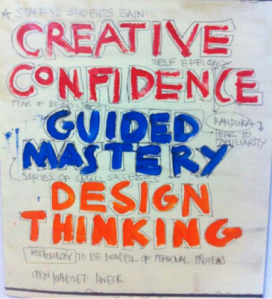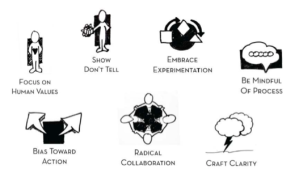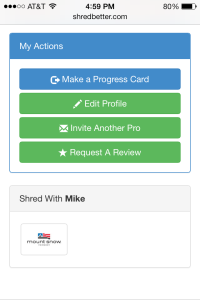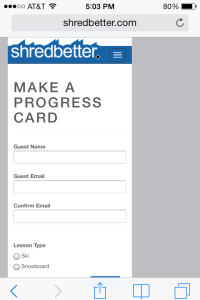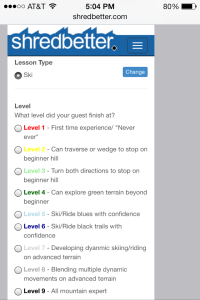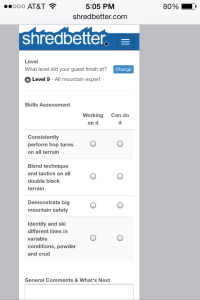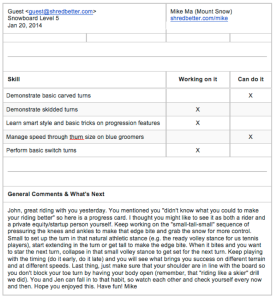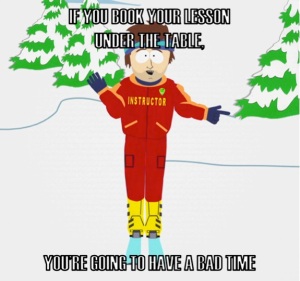by Mike Ma
How are your beginner progressions? Got them on lock? I bet you have a series of tasks and drills that you can recite in your sleep. But let me ask you, how many of them allow your guests to be creative?
Creativity is not just for just musicians, artists, and dancers, but includes businesswomen, doctors, firefighters, stay-at-home dads and everyone in between – including your beginning guests.
A leader in teaching creativity comes from the Stanford Design School, where I have been for the last 8 weeks immersing myself in a concept called “design thinking.”
Design thinking is a creative process that has led to some of the development of many of the most innovative products you use today, ranging from the Apple mouse, OXO kitchen tools, to solving many world problems like portable light and incubating premature babies in impoverished countries.
During the first session at Stanford, our faculty put up these two slides up to explain what design thinking is and how we are going to be practicing it.
courtesy: Stanford d.school (FYI – that’s Guided Mastery, not Mystery)
What if we applied these ideas to what we do on snow?
The typical development of skiers and riders saves “creative” tasks like freestyle for intermediate to upper-level lessons. There is a belief of most of the public and many instructors that our guest athletes have to “learn the basics” before they can explore creativity.
As experienced pros, can we challenge that? Instead of only teaching tasks in a progression, can we teach creativity starting a beginner? Can we have guests using their equipment as creative tools from the first minute on snow?
Here are a couple thought starters that might work on any equipment that I’ve been experimenting with in different lessons this season. These are just suggestions that you may play with, steal, debate, or expand and create your own.
| Standard Progression | Creative Progression Suggestions |
| Static Stance Drills / Straight Glides | Photo Shoot – Have your athlete or group pick a pose while standing on their equipment as if you are posing for a magazine photo – get them to “own their stance.” Ask them about why they picked that stance and have the group try different poses (could be a nice icebreaker too!).
Pending your guest and terrain assessment, encourage them be as creative as safely possible: · Want to tail press? Awesome! · Want to be out of the bindings? OK, show me. · Best friends want to do a “back to back” pose? Let’s give it a try. Let them try moving in their stance in a straight glide. Let them try different stances or “steal” someone else’s stance. These provide great coaching opportunities for you to provide positive feedback that is supportive of an athletic stance. |
| Skating / Fade Turn | Spelling Bee – Once you’ve taught some static edging movements on flat snow, ask them to write a few letters or numbers in the snow using gentle edge pressure while skating (could be their initials, favorite color, their grade level, etc.) You could pair the group up, and see if the partner can follow along and guess the letters.
Be sure to coach how different characters will require edge changes (like a Z) and be sure to note the movements in the ankles and knees that are successful. |
| Side slipping / Linking turns | Chalkboard – Pair up the group. One plays “the student” and the other is “the professor.” The student is downhill while the professor is uphill. For a slide slip drill, the professor calls out a number and that is the number of “hash marks” the student has to make in the snow while side slipping. The professor comes down next using gentle edge pressure to “erase the chalkboard” by replace the hash marks with smooth snow. Have them switch roles as appropriate.
After introducing linking turns, this game can be used again. The student links turns, while the other professor has to erase the student’s turn artwork. Be sure to have the switch edges in their sideslips for balance. |
| Varying turn shape | Beat Box – Have one of your guests make a beat using their lap as a bass drum and a clap as the snare (for instance, Lap … clap … lap, lap clap!). See if they can make “turns to the beat” using varying shapes and speeds. You can insert your own beat if the group is becomes too uniform.
Lastly, see if you can have the group do a “remix” or a “mashup” from different members’ beats to see what new shapes they can make from those new sounds. |
What these drills share is not that they are games per se, but rather each encourages our guests to view their gear as a creative instrument, just like a paintbrush, a guitar, or a pair of ballet shoes.
Note well, these ideas are most effective in the hands of a seasoned instructor. These concepts are not likely for the newbies who have yet to understand the bread and butter mechanics that come with experience and repetition.
However, I’d wager the sooner that we can get our guests to unleash their creative energy into their skiing and riding, the more likely we can create a love of the sport for life. Being someone’s creative coach may be a great way to rethink our jobs on snow.
If you are interested in getting more inspiration from design thinking and creative confidence, Stanford gives them away free at dschool.stanford.edu
